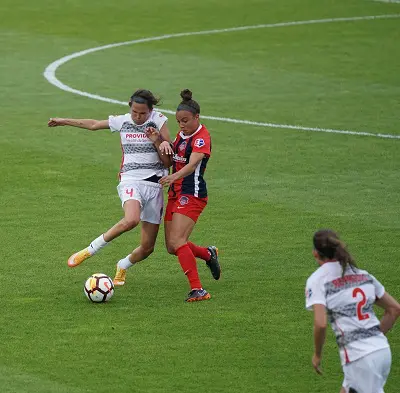Why Are Women at Greater Risk?
When it comes to ACL injuries, the playing field isn’t level between men and women. Females are up to three times more likely to suffer an ACL tear than their male counterparts. But why? Is it anatomy, biomechanics, or something else entirely? Let’s break down the factors that put women at a higher risk—and what athletes can do to protect their knees.
Understanding these differences can help female athletes stay stronger, play longer, and avoid unnecessary sidelining.
RISK FACTORS
- Anatomical differences between males and females, such as a wider pelvis, variations in muscular strength, and tissue quality, contribute to the increased risk of ACL injuries in females. These structural factors can put more strain on the knee’s ligaments.
- Physiological factors, like differences in landing mechanics, jumping patterns, and hormone levels, also play a significant role in making females more susceptible to these injuries. ACL tears have been found to occur during specific phases of the menstrual cycle, thought to be related to fluctuating hormone levels.
- Many females participate in lower extremity-based sports, such as soccer and basketball, where ACL injuries are commonly seen.
- Females have been found to have an anterolateral ligament (ALL) that is half the thickness than males. The ALL plays an essential role in controlling rotation of the knee, therefore, the thinner the tissue, the higher the risk of injury. Review research supporting this here.
While it may be discouraging that females are naturally at higher risk of ACL injury, there are many steps that can be taken to prevent injury. One of the most prevalent prevention strategies is incorporating an injury-prevention exercise program into your weekly routine. There are many programs out there that may vary slightly in specific exercises. Still, the focus should be multi-factorial to include a focus on flexibility, strength, proprioception (sense of self-movement and body position), and your ability to jump and land safely.












